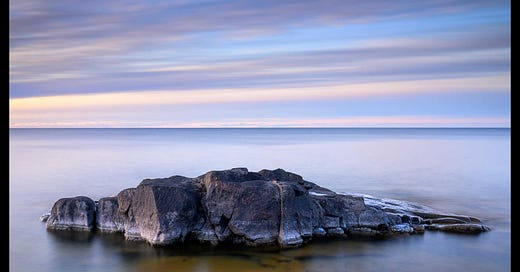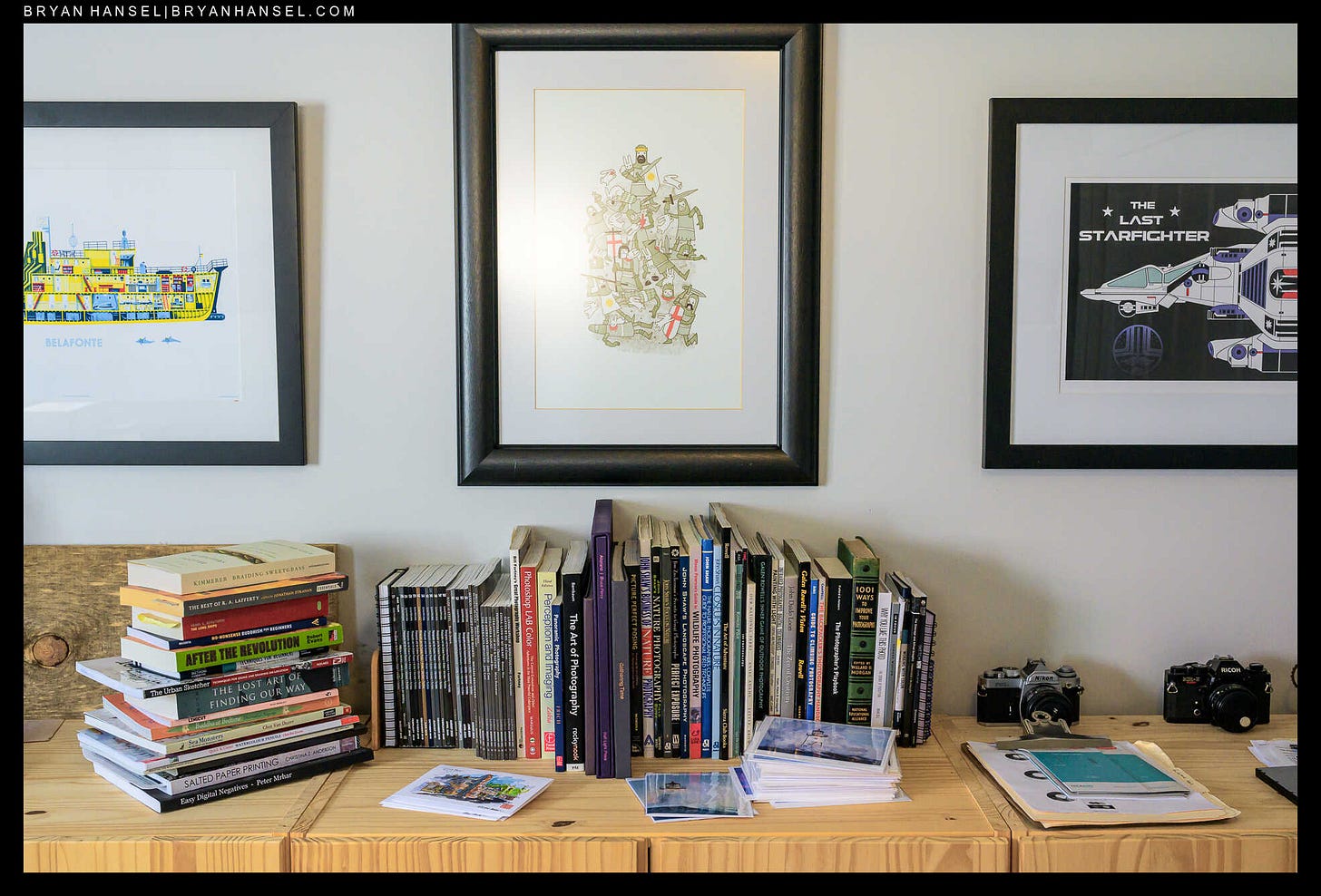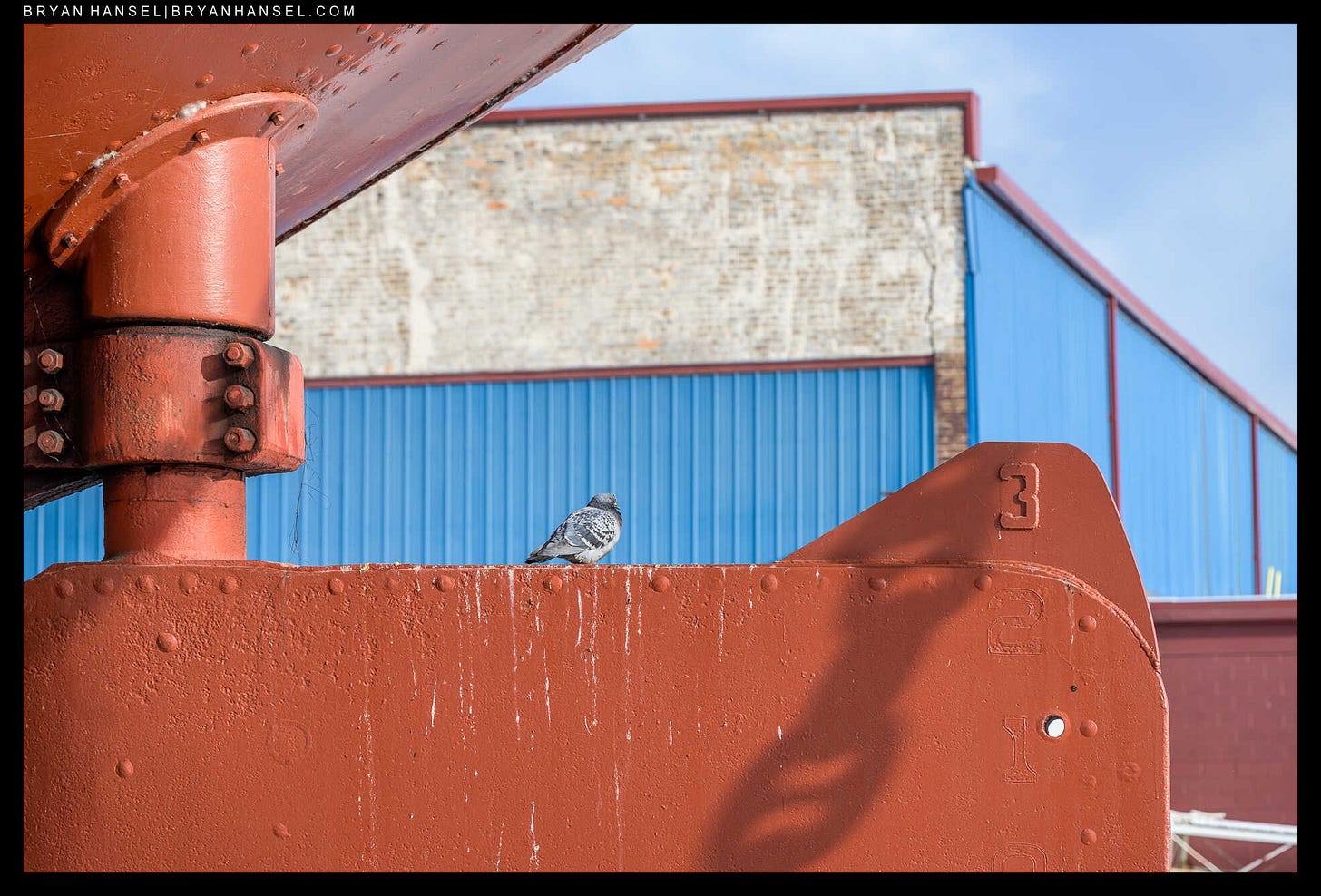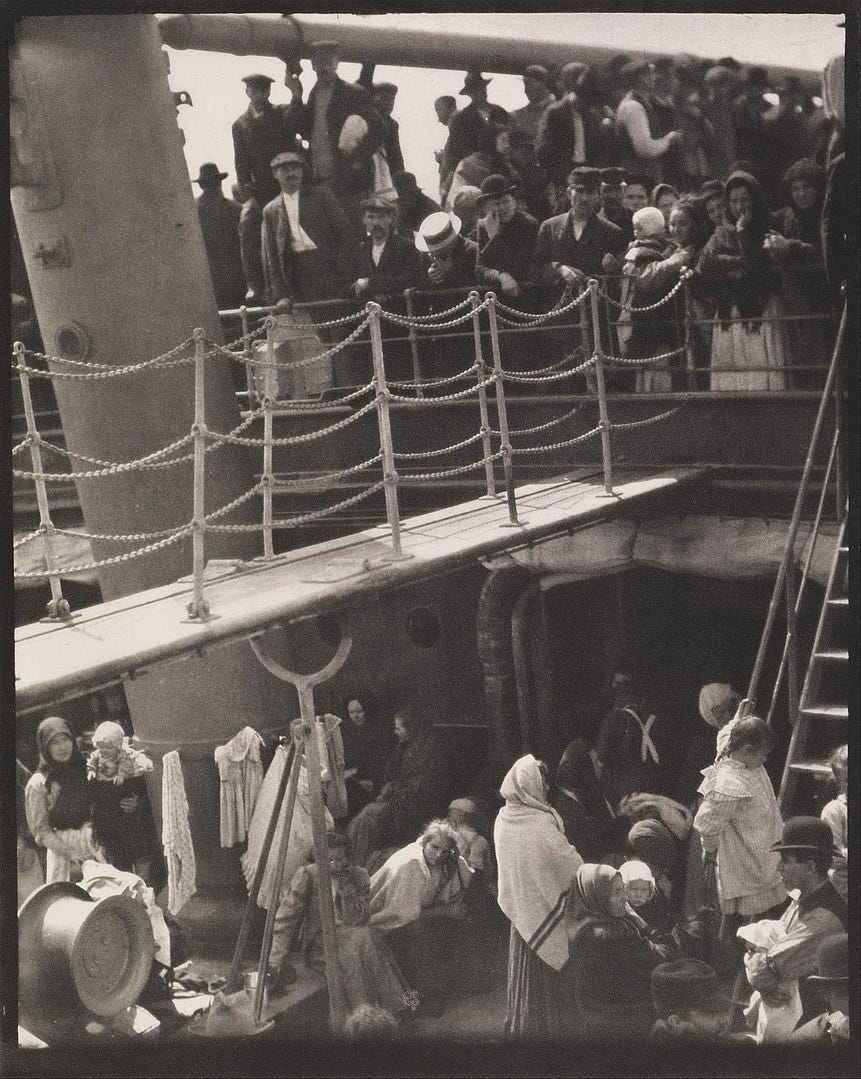I have a pile of books in my office that sit stacked and unread. I had them next to my bed, but that made sleeping feel intimidating, so I moved them down two flights of wood stairs that I built by hand and set them next to the photography books that I keep in my office. I keep them in my office because my book shelf is full of books — many unread.
Among my photography book shelf there’s a collection of books that are lonely with knowledge unconsumed. I bought them or was gifted them and had great intention to read them, but then I found that my curiosity was greater than my will to read. It seems that my pile of unread books grows and grows.
I wonder how I haven’t gotten around to reading a book of commentary on Edward Weston’s photos. I mean I use his quotes, including this one “Good composition is merely the strongest way of seeing,” in my presentation on composition. I should read the Weston book instead of browsing it and reading just the page here and there when a photo catches my attention.
I mean how can you not want to read about Weston when he said:
“Anything that excites me for any reason, I will photograph; not searching for unusual subject matter, but making the commonplace unusual.”
Thinking that way has freed me to make photos such as this one, which exited me if not you and I tried to make the commonplace unusual. I’m not sure if I succeeded. Maybe. Maybe if I read more about Weston, I’d see more in the world to photograph.
Another unread book is a book of commentary on Alfred Stieglitz’s 1907 photo The Steerage (shown below). This photo is now public domain, so you could print a copy for yourself if you wanted to print a copy for yourself. If you did, wouldn’t you want to read 133+ pages of commentary on this now iconic photo. It sounds like a lovely evening in front of the fireplace while sitting in my nonexistent rocking chair.
I wish I had a rocking chair.
The Steerage book is applying full rudder towards 1001 Ways to Improve Your Photography, which I cracked for the first time just before I started this essay. Next to it sits The Photographer’s Playbook, a book of project ideas, assignments, stories and anecdotes from various famous photo pros. I’ve read a few pages and moved on.
Then there’s Ansel Adam’s Our National Parks, which I looked at for the photos, and Time Magazine’s 100 Photos, which I’ve glanced at. Perfect Exposure is next. I can’t even remember why I bought it. That’s next to Picture Perfect Posing, which I’ve started three or four times. Gathering Time and Altiplano by Simon Baxter and Bruce Percy, respectively, are luckily mainly photos, but I should read the forwards at some point. When I lectured at a college about landscape photography, the instructor gave me a copy of the textbook the students used, Perception and Imaging. Unread. Photoshop LAB Color might as well be used as kindling based on how old it is. I wanted to learn the techniques but not enough to read the book. Then last year, I stocked up on unread books about salted prints and making salted prints. They sit there unsalted by my eyes.
That doesn’t even include books not related to photography, such as Braiding Sweetgrass, After the Revolution, The Lost Art of Finding Our Way, Buddha at Bedtime, and Sea Monsters.
Phew!
That doesn’t count the books that I wanted to buy like the one below.
The Japanese have a term for a pile of unread books; it’s tsundoku. In English, Nassim Nicholas Taleb coined the term antilibrary. In The Black Swan, Taleb wrote:
“A private library is not an ego-boosting appendage but a research tool. Read books are far less valuable than unread ones. The library should contain as much of what you do not know as your financial means, mortgage rates, and the currently tight real-estate market allows you to put there. You will accumulate more knowledge and more books as you grow older, and the growing number of unread books on the shelves will look at you menacingly. Indeed, the more you know, the larger the rows of unread books. Let us call this collection of unread books an antilibrary.”
I borrowed The Black Swan from the library once but didn’t finish it, but if Taleb is right then having unfished books is fine. Unread books are a way to know that we don’t know. It’s being humble. I believe there’s a saying that’s something like this: the more you know, the less you know you know. I know it’s something like that.
If that’s true than maybe — heading off on a photography tangent — it’s okay to start a new photography project in fits and starts and then abandon the idea until you need to consult it again in the future to learn more.
Isn’t it better to have started a project and given up, than having never started in the first place? It would be if we believed Taleb and believed that buying or obtaining a book is the same as starting a project. Maybe it’s just dreaming up a project and then never finishing that’s important as having unread books.
Dreaming up a new project or picking up a new book shows curiosity in the potential photo project or book, and I’ve always maintained that photography is part curiosity.
One of the primary drivers of good photography is curiosity. That is wondering “what if?” and “what is?” It’s the innate human emotion for a thirst of knowledge and the desire to explore and learn more.
I’m a little curious right now how this essay is going to end, but I don’t know where this essay is going so how can I get there. Sometimes I start writing about one topic and then abandon it midway like an unfinished book. I never outline; I just write until I find out what’s around the corner. I do photography in much the same way. Exploring and sometimes that works out and sometimes I get stumped just like after buying a book and getting home and thinking, why did I buy this book and then adding it to the book pile, the tsundoku, the antilibrary
Getting stumped in an essay reminds me of a song by one of my favorite bands, Camper Van Beethoven:
There's not a line that goes here
That rhymes with anything
But I’m curious, and curiosity is important in photography, and I have a pile of books that are unread that I was curious enough about to buy, and I have a current project called the “The Empty Project” that I don’t know where it’s going, but I’m curious to find out.
Right now, I only know it has been here:
Here
And here
And that’s okay. Just like unread books, we don’t know how unfinished photo projects are going to end until we read the last sentence.
Until next time
I hope you enjoyed it essay. Please, let me know. This one might have been a little more on the less side of More or Less About the Photo, but then again maybe not.
Also, I have openings available on my Online Night Photography Class.
I’ll see you again in two weeks.
p.s. just before hitting schedule on this issue, the book Accidentally Wes Anderson showed up at my house. The hardcover was on sale for $15! I couldn’t pass it up. It’s a book of photos of places that look like they belong in a Wes Anderson movie — sort of like my kid’s classroom pictured below. Can you guess where the book will end up?











Thanks for your musings, Bryan. I appreciate your perspective. Now I need to go organize my unread books, including Edward Abbey's Desert Solitaire.
Imagine you did get through all those books - It would be like having no ideas for a new photography project!